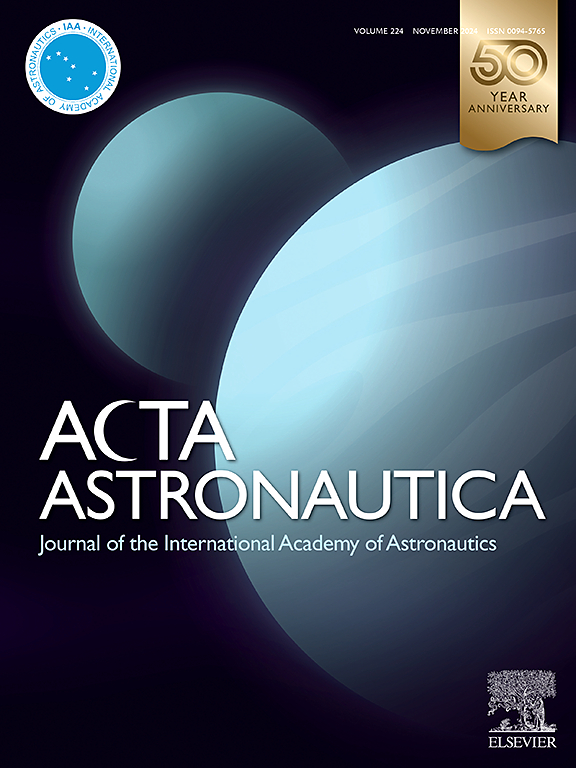Electrodynamic tether and brake sails combination deorbit design
IF 3.1
2区 物理与天体物理
Q1 ENGINEERING, AEROSPACE
引用次数: 0
Abstract
Given the growing threat of an impending space debris crisis, nations worldwide have intensified their research efforts in satellite deorbiting technologies. Electrodynamic tether and braking sails stand out as popular methods for spacecraft deorbiting that do away with the necessity for propellant. However, these methods possess their own set of limitations. This paper presents a holistic dynamical model for a fusion of electrodynamic tether and braking sails. The aim is to avoid the complex nonlinear dynamics during the deployment, retrieval, and dwell time of electrodynamic tether, while compensating for the insufficient trust generated by braking sails in high orbital environments. The objective is to enable satellite to deorbit swiftly and stably under a broader range of conditions. Specifically accomplishing the following three aspects: conceptualizing the design of an ideal equipment, implementing simulated deorbiting process, and conducting an efficiency comparative analysis with prevalent current deorbiting methods. Through numerical simulations, the effectiveness and feasibility of this proposed design have been validated.
电动系绳和制动帆组合脱轨设计
鉴于迫在眉睫的空间碎片危机的威胁日益严重,世界各国加强了对卫星离轨技术的研究。电动系绳和制动帆是航天器离轨的常用方法,它们无需推进剂。然而,这些方法都有各自的局限性。本文提出了一个融合电动系绳和制动帆的整体动力学模型。其目的是避免电动系绳在展开、回收和停留时间内的复杂非线性动力学,同时补偿制动帆在高轨道环境中产生的信任度不足。目标是使卫星在更广泛的条件下迅速稳定地脱轨。具体要完成以下三个方面的工作:构思理想设备的设计,实施模拟脱轨过程,并与当前流行的脱轨方法进行效率对比分析。通过数值模拟,验证了这一拟议设计的有效性和可行性。
本文章由计算机程序翻译,如有差异,请以英文原文为准。
求助全文
约1分钟内获得全文
求助全文
来源期刊

Acta Astronautica
工程技术-工程:宇航
CiteScore
7.20
自引率
22.90%
发文量
599
审稿时长
53 days
期刊介绍:
Acta Astronautica is sponsored by the International Academy of Astronautics. Content is based on original contributions in all fields of basic, engineering, life and social space sciences and of space technology related to:
The peaceful scientific exploration of space,
Its exploitation for human welfare and progress,
Conception, design, development and operation of space-borne and Earth-based systems,
In addition to regular issues, the journal publishes selected proceedings of the annual International Astronautical Congress (IAC), transactions of the IAA and special issues on topics of current interest, such as microgravity, space station technology, geostationary orbits, and space economics. Other subject areas include satellite technology, space transportation and communications, space energy, power and propulsion, astrodynamics, extraterrestrial intelligence and Earth observations.
 求助内容:
求助内容: 应助结果提醒方式:
应助结果提醒方式:


